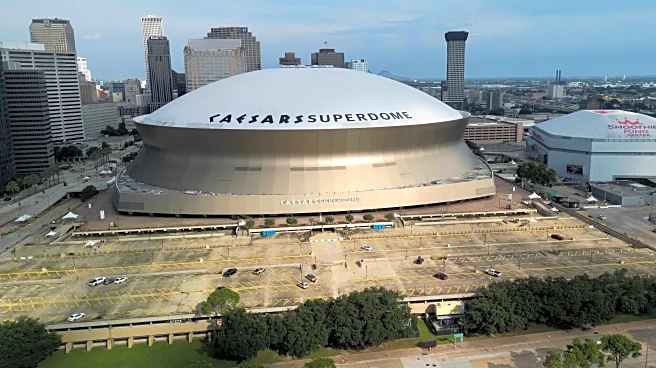What's Happening?
In the aftermath of a devastating tornado in St. Louis, real estate investors have been aggressively pursuing the purchase of damaged properties, a phenomenon known as 'disaster gentrification.' This involves investors buying up properties at low prices in disaster-struck areas, often displacing lower-income and Black residents. The tornado, part of a series of storms across several states, left many homes damaged, prompting speculators to offer quick cash deals to homeowners struggling to rebuild. This pattern has been observed in other disaster-hit areas, such as New Orleans post-Hurricane Katrina, where demographic shifts have occurred due to similar real estate practices.
Why It's Important?
The aggressive acquisition of properties in disaster zones by investors can lead to significant demographic changes, often displacing long-standing communities and altering the cultural fabric of neighborhoods. This practice raises concerns about the exploitation of vulnerable populations who may lack the resources to rebuild. As climate change increases the frequency of natural disasters, the potential for 'disaster gentrification' grows, posing challenges for equitable recovery and community resilience. The issue highlights the need for policies that protect affected residents and ensure fair access to rebuilding resources.
What's Next?
Communities affected by disaster gentrification may face ongoing challenges in rebuilding and maintaining their cultural identity. Efforts to curb this practice could include legislative measures to regulate real estate transactions in disaster zones and provide financial support to homeowners. Advocacy groups and policymakers may push for reforms to ensure that recovery efforts prioritize the needs of existing residents over speculative interests. The situation in St. Louis and similar areas will likely continue to evolve as stakeholders seek solutions to balance development with community preservation.
Beyond the Headlines
The ethical implications of disaster gentrification are profound, as it often involves exploiting the misfortunes of others for profit. This practice can exacerbate existing inequalities and contribute to the loss of cultural heritage in affected areas. Long-term, it may lead to increased scrutiny of real estate practices and calls for more transparent and equitable housing policies. The phenomenon also underscores the importance of community-led recovery efforts that prioritize local needs and voices.











